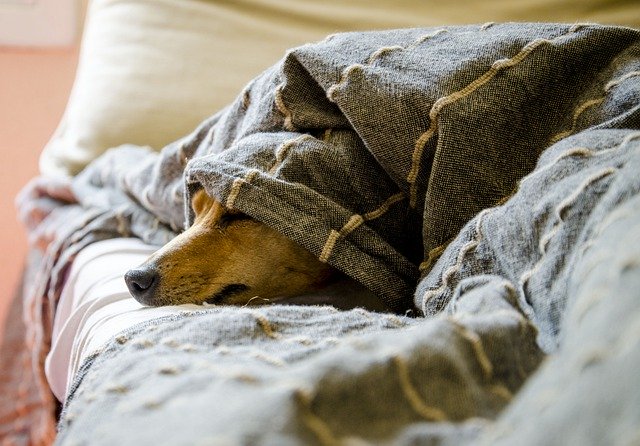How to Do a Dog Health Check at Home ? Of course, the vet knows best, but you can do some simple examinations yourself. Your veterinarian will always advise you to first make sure that your dog is really feeling bad, that something is hurting or bothering him, and only then take him for an examination.
The dog is the most relaxed at home, so if you suspect that he is not well, you can do a few simple tests yourself, and then, if you see a change – go to the vet. If you suspect that your dog has a health problem, first pay attention to his behavior – whether he eats, drinks water, what he looks like, whether he is playing and whether he is in the mood.
These are always sure signs that indicate whether your pet is healthy or something is bothering him.
Then, you can conduct some simple tests yourself to determine if everything is in the best order. Here’s what you can do on your own, even if you’re not a vet.
Measure his temperature
This is not exactly a favorite examination for dogs, and to be honest, not for people, but this is the first step in diagnosing a health condition. A digital rectal thermometer is the most accurate way, so if you don’t have it yet, it would be good to get it and have it at your home pharmacy. Apply a little lubricant on top of the thermometer, to make the measurement more pleasant. The normal temperature of a dog is between 37.7 and 39 degrees.
Check his pulse
The best way to measure your dog’s heart rate is to find the femoral artery near the groin. Count the number of beats over 15 seconds, then multiply that number by four. Dogs’ heart rate varies, but between 80 and 120 beats per minute is considered normal. The pulse of puppies and smaller dogs is faster than the pulse of large breeds.
Examine his head
The nose should be clean and smooth. Eyes – clear, clean, with only a few visible blood vessels and pupils of the same size. Ears – clean and dry; when you gently massage your dog’s ears it should not rebel, but look relaxed. Mouth – clean and white teeth, pink gums, moist to the touch.
Watch your dog’s chest as he breathes
The chest should move relaxed as the dog inhales and exhales, without any effort. Each sigh and exhale should be identical. It is normal for a dog to inhale 15 to 30 times in one minute. Smaller dogs breathe faster than large ones, so keep that in mind.
Examine his skin
The skin of a healthy dog is soft, without visible sores or damage, without odor. Except for wire-haired dogs, the coat should be soft and shiny. If you notice sores or dandruff – visit a veterinarian.
Check hydration
A simple test is to gently squeeze (“crumple”) the skin of your neck or back, and if it returns to its original state immediately, your dog is well hydrated. If the skin needs to return to its original state for a long time or you notice that it is still wrinkled, it means that it is dehydrated.
Examine his stomach
Gently press your pet’s belly and make sure you feel a lump, a growth. Make sure your dog is comfortable or in pain. If he has just eaten, you should feel the enlargement of that part of the stomach under your fingers, on the left below the chest – this is completely normal after eating. Any other bulge or discomfort in the dog while lightly pressing on his stomach means that there is a problem with his stomach or internal organs, and that it is time for the vet.





